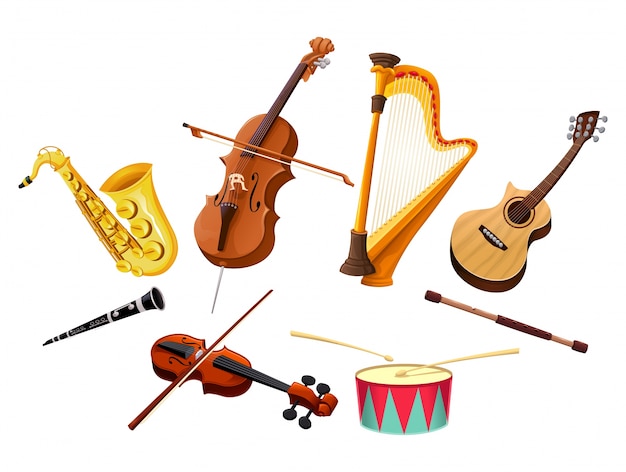
Learning to play a melodic instrument is one of the most fulfilling aptitudes in life. Music connects with feelings, creativity, and skill. Yet, not every instrument is easy to master. A few need a long time of preparation, exact techniques, and profound patience.
This article explores what the most difficult musical instrument to play is. We'll look at why it's challenging and what makes each instrument unique. Whether you're an apprentice or a music enthusiast, this guide will help you understand the beauty behind these complex genres.
The level of challenge depends on your viewpoint criteria song choice and goals. With a few disobedient instruments like the piano harmonica or drums, it’s generally basic to play your first notes. As you explore advanced play methods things get more complex. You'll encounter endless musical journeys and exciting challenges!
What Is the Most Difficult Musical Instrument to Play?

Learning and Acing: There’s a Difference
Some rebellious take longer to create great sounds, or any sound at all. Others need you to create physical abilities to begin with. But that’s what makes music intriguing. There’s a enormous distinction between learning and acing an instrument. Let’s investigate a few disobedient that offer a fulfilling challenge when learned (or mastered).
Read Also: When I Hear the Music It Makes Me Dance Lyrics?
Top 10 Hardest Instrument to Play
1. Oboe – The twofold reed experience
The oboe produces lovely sounds when played. This instrument has a secret: to play the first notes on this woodwind, you need to understand its double reed. This means two wooden edges vibrate against each other. Playing the oboe is like blowing a bubble. It needs practice, control, and good breathing. Each session gets you closer to beautiful music. Ready to train your abs?
2. French Horn – Epicness, basically put
The French horn is a captivating wind instrument. It has a long tube with a limited bore, making tone control a refined aptitude to ace. Yes, skilled horn players find it tough to adjust pitch. But that’s what makes playing this instrument so rewarding! Hand-stopping techniques add to the complexity of this magnificent instrument. Still, it’s worth it. The French horn stirs deep emotions in listeners. It delivers powerful performances that feel epic.
3. Violin
The violin is a prevalent classical instrument, challenging but not inconceivable to play. Many say that a great violinist is able to make their instrument sing or talk, and that’s where the dubious part is. In this post, I am sharing some good information about a group of people playing musical instruments.
Despite its challenges, the violin is popular with kids. When they start young, they can master it easily. Disclaimer: Fledglings may take one to two years to advance from scratchy, off-key sounds to the lovely tones this instrument is capable of. Don’t lose trust: This is the beginning of a deep-rooted melodic adventure.
4. Harp
The harp is one of the most charming and challenging instruments to learn. It is physically expansive and has various strings that are plucked with both hands. There can be up to seven pedals, depending on the sort of harp, which will alter the pitch of the strings amid the execution. This requires tall coordination of hands and feet to create those charming and legendary sounds!
5. Organ – for melodic acrobats
Playing the organ lets you coordinate your hands fingers and feet all at once. It’s like playing the piano or drums. This ability must be broadly practiced on the organ, pipe organ or church organ.
Whereas the hands oversee the manuals, stops and sounds the feet work the pedalboard in the bass, weaving together epic tones. It’s challenging, but acing it is exceptionally rewarding.
6. Drums
Independent appendage coordination is the fundamental expertise to create in drumming. Arms and legs work independently, and the left and right brain halves of the globe must work independently.
Drummers are more often than not encouraged to halt “thinking” (no quip planning) amid the tune and let muscle memory take over. The first four-beat design is easy to learn. Yet, mastering complex techniques takes practice. This journey is exciting and engaging.
7. Bagpipes
The bagpipes offer a classic physical challenge. Whether it’s the Awesome Good country Bagpipe, Smallpipe, Borderpipe, or Hümmelchen, the wind stream required to play is colossal. Whereas you persistently blow into the instrument, you moreover pump discuss out with your arm. Anyone who is diligent, patient, and persistent can learn to play the bagpipes. It can be very rewarding, even though it requires physical effort at first.
8. Sitar – investigating Indian culture
The buzzing, overtone-rich sound of the sitar has a interesting charm. The challenge of this instrument lies not as it were in its tune, ramble, and thoughtful strings, but moreover in its abnormal playing procedure. To truly enjoy the experience, we suggest exploring the rich Indian culture and classical Indian Raga music. An energizing and beneficial travel filled with wealthy social disclosure what more can a performer inquire for?!
9. Guitar – the sky is the limit
The guitar is regularly said as an “easy-to-learn” instrument. In fact, its to begin with notes, chords, and tune backups can be fast to play, indeed if the fingertips might harmed at to begin with.
Be that as it may, the journey to those finger-shredding solos in overwhelming metal, as well as those favor blues licks, fingerstyle adroitness, and paramount licks can be very long. Learning never closes with the guitar; it is a really boundless instrument, advertising unending potential and excitement.
10. The Human Voice
The voice is too an instrument. Casual singing like at a party or in a football stadium is an simple work for everybody (well, other than pitchy singers. )Be that as it may, this has small to do with genuine singing.
But for natural-born abilities, the singing voice must be prepared and created over a long time to anticipate physical harm from disgraceful method, to win the audience’s amazement, and to be able to pass on all the feelings required in the melody. This travel of vocal improvement is both challenging and profoundly satisfying.





